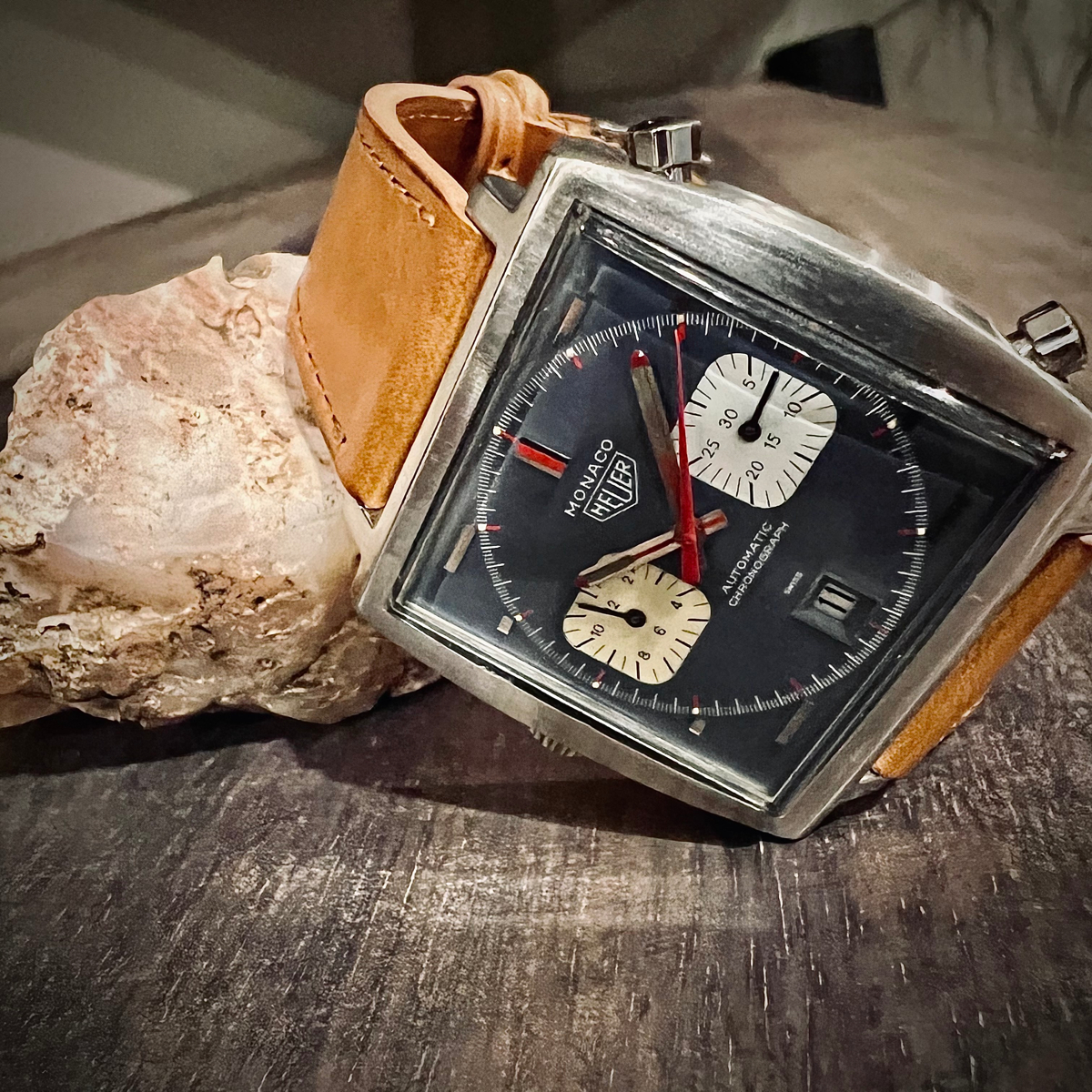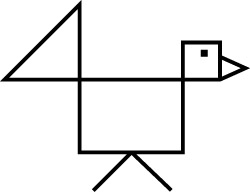Heuer fans, accustomed to an aesthetic patterning the golden era of racing-informed chronographs and exemplified by the Carrera and the Autavia, have long been indoctrinated to believe the Heuer Monaco Calibre 11 was another iteration of this design philosophy. That along with racing-livery hues and uber-masculine presences (aka McQueen), there could be no higher form of motor-inspired art piece that could adorn one’s wrist. But, if my ownership of a Heuer Monaco has taught me anything, it’s less about cars and manliness and more a reminder about my relationship with time and what I do with it.
If we look more objectively at what this object is, a square, containing a round, time-telling scale we might think “That’s curious.” Does such design offer functionality? In fact, it is extraneous and counterintuitive. Neither is it sensible for water resistance, which it boasted at its release, nor is it sleek, dynamic, or compact, betraying its Formula 1 namesake which is the tightest and most demanding course in terms of track-line tolerances, then or since. Some have outrightly called the Heuer Monaco awkward and ugly; and while I can understand the sentiment, disagree with such myopy because it judges based on prescription and, as I’ll suggest, the Monaco is far more philosophical than its marketed placement in the Grand Prix-me wish fulfillment of potential wearers. One couldn’t wear it now, with fantasies of F1 if one wanted too, but we are given the chance to approach the Monaco with wiser eyes.

In their coverage of the 50th anniversary of the Heuer Monaco Calibre 11, Hodinkee noted Jack Heuer’s intent to use a “revolutionary square case” as the “perfect housing for our avant-garde ‘Monaco’ wristwatch.” And with that, it’s easy to imagine how racing-inspired badging and design iconoclasm become bedfellows. If Heuer was racing to anything with the Monaco, it was to define itself and stand out with its new automatic movement, the most coveted of which come on early pieces with Chronomatic on the dial. So “effective” was this new automatic marvel, that one would no longer need an easily windable crown, as Heuer ads boasted, explaining their left-case placement. The functionalism of the destro design choice on Cal 11’s has weathered about as well as the believability of its water resistance (there is no quick-set date either), yet it serves as another statement of the revolutionary aspirations. Winding a (freshly serviced) Cal 11 is still a slightly anxiety producing affair because there is a texture to it where one feels gears turning but also uncertainty regarding undue strain. Finding service options, by the way, is no given as parts are not readily available and can take a fair amount of time and cost to source. To own an original Heuer Monaco is a commitment to maintaining a piece of machinery whose factory has closed, its designers not only long gone, but their avant-garde dreams as well.

Or is the dream of this color-TV-set-aesthetic gone? To answer that question, I might ask one to consider the relevance of Kubrick’s monolith, Freud’s topography of psyche, or that you can still submit your taxes in hand, on printed forms. There are some structures, archaic or anachronistic as they may be, that still inform our day-to-day dialogue. Do we ridicule the crudeness of the symbol or are we struck by its uncanny resilience? Consider the importance of rounded squares to design…Steve Jobs did. Ever wonder what looking at squares, inside of circles, inside of squares does to us? Religious architecture testifies to that. Gazing at the dial of the Heuer Monaco feels existential. Like time is in a box and that telling time is a silly act or at least one to be bracketed and remembered that we are racing on tight corners, surrounded by shops and spectators, squares in a beautiful round world, ultimately coming back to where we started.


Leave a Reply
You must be logged in to post a comment.